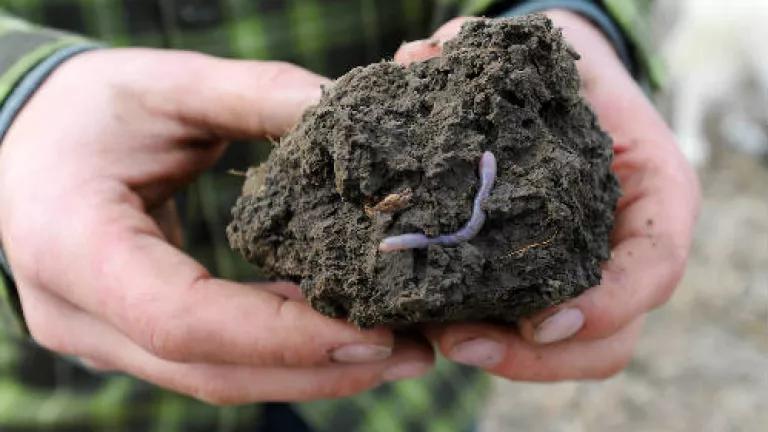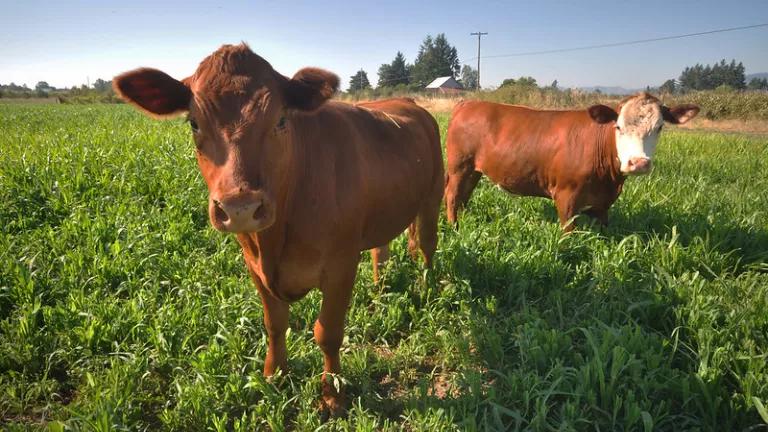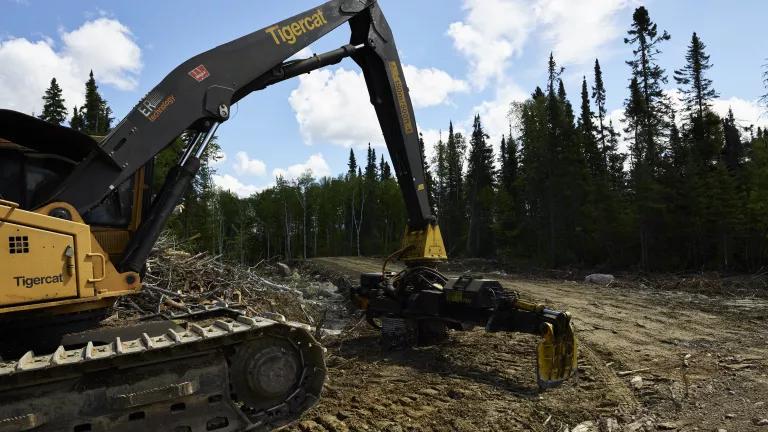Supporting Agroforestry Through the California Healthy Soils Program
Guest Author: Sara Haas is a 2023 Stanback Fellow from Duke University graduating in Dec. 2023 with degrees in Biology and Environmental Science & Policy.
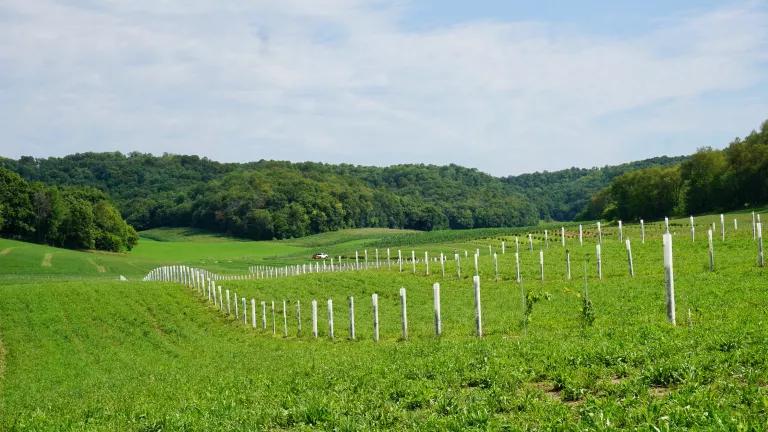
Agroforestry in action at the Savanna Institute's Demonstration Farm in Spring Green, Wisconsin
Arohi Sharma, NRDC
California can continue its leadership in climate smart agriculture by using the Healthy Soils Program to unlock agroforestry’s full potential to fight climate change.
Agroforestry, a form of regenerative agriculture rooted in Indigenous knowledge, can help California meet its climate and biodiversity goals on crop and rangelands. Cited as one of the strategies with the highest potential for both climate change adaptation and mitigation by the IPCC 2022 report, agroforestry integrates trees and shrubs onto farms and ranches and includes practices like riparian forest buffers, windbreaks, alley cropping, and silvopasture. A growing number of California farmers and ranchers are adopting agroforestry practices, and grant programs must meet statewide demand for this climate beneficial practice. With small changes to the Healthy Soils Program (HSP), California can help more farmers practice agroforestry, helping to meet the natural and working lands goals set out by the California Air Resources Control Board’s (CARB) Scoping Plan and the state’s 30x30 goals.
The HSP Incentives Program, provides grants to farmers to implement conservation management practices that improve soil health, sequester carbon, and reduce greenhouse gas emissions. In line with the HSP guidelines, agroforestry practices enhance carbon storage, increase biodiversity above and below ground, improve air and water quality in surrounding regions, and provide economic benefits such as improved crop yield and diversified income streams. Agroforestry practices are eligible for funding through the Healthy Soils Program. Unfortunately, our analysis of 2020 & 2021 HSP Incentives Program grant awards shows that agroforestry practices are not well funded through the program, but with some small changes the California Department of Food and Agriculture (CDFA) has an opportunity to prioritize this multi-benefit practice to meet our state’s climate and biodiversity goals. Here’s what our analysis showed:
Agroforestry projects represented only 2.6% of all HSP grants in the two-year 2020-2021 cycle
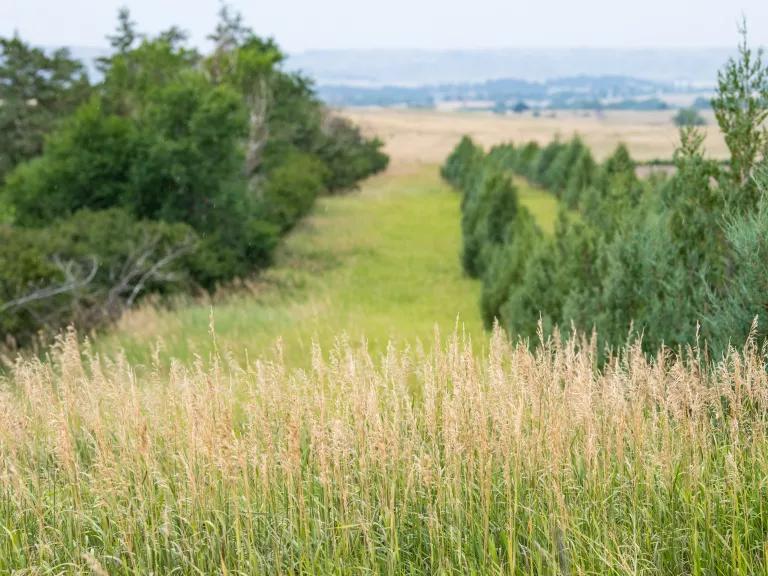
A windbreak, a.k.a shelterbelt, on Frank and Jackie Mills' ranch in Crawford, NE.
Lance Cheung, USDA
The 2020-2021 HSP Initiative awarded funding to 1,846 projects – of those projects, only 49 were for agroforestry practices. The low rate of agroforestry grant awards over this two-year cycle can signal a few issues, including a lack of awareness for agroforestry and its myriad benefits or a larger issue related to the way the grant program is structured for practices that are longer-term in nature. The total estimated acreage for agroforestry awards was also low, which alludes to larger systemic issues in the HSP program, including inadequate payment rates for certain practices.
Harnessing the versatility of agroforestry and scaling these practices could move the state closer to achieving CARB’s Scoping Plan goals of implementing healthy soils practices on 80,000 acres every year starting in 2045. Agroforestry’s ecological and economic benefits create climate resilience on farms and ranches and warrant significantly more state investment. CDFA staff should investigate why, despite growing interest in this practice across the state, more growers are not leveraging the HSP to help establish agroforestry practices on their land.
Windbreaks-shelterbelts are the most popular agroforestry practice funded by the HSP
| Multi-Story Cropping | 1 |
| Riparian Forest Buffers | 12 |
| Silvopasture | 1 |
| Tree/Shrub Establishment | 11 |
| Windbreak-Shelterbelts | 24 |
The HSP Initiative funds six different agroforestry practices: multi-story cropping, riparian forest buffers, silvopasture, tree and shrub establishment, alley cropping, and windbreak-shelterbelt establishment. There were no alley cropping projects funded in the 2020 and 2021 application cycles. Windbreak-shelterbelt establishment represented roughly half of the total agroforestry projects funded.
The crop yield protection and increased profit benefits of windbreak-shelterbelts can be reasons why this agroforestry practice is the most popular. Windbreaks have a longer history as a USDA supported conservation management strategy on agricultural lands, and the description of this practice can make it seem easiest to implement. However, each agroforestry practice shows potential both as a climate solution and a commercial benefit for farmers while being adaptable to various farming systems. Expanding the HSP to support more agroforestry projects in total must be tied with support for a variety of agroforestry projects on a wider variety of farm types. Unlocking agroforestry’s potential requires more focus on outreach and education around these and other agroforestry practices to highlight their unique benefits.
The HSP is poised to deliver on the state’s multiple climate, biodiversity, and conservation goals by scaling up its support of agroforestry projects, but the program needs significantly more investment and direction from the state.
- First, the HSP Incentives Program can give preference to agroforestry by allotting more points for agroforestry projects in its application evaluation criteria since agroforestry addresses a myriad of climate, water, biodiversity, and economic benefits to growers.
- Second, CDFA can increase the payment rates for agroforestry projects, especially because tree and perennial shrub planting requires significant upfront costs and longer-term maintenance.
California leads the nation in climate-smart agriculture investments through its Healthy Soils Program, and it can continue that leadership by using the program to unlock agroforestry’s full potential to fight climate change, bolster biodiversity recovery, and build diversified profit streams for growers in the face of ecosystem change.


